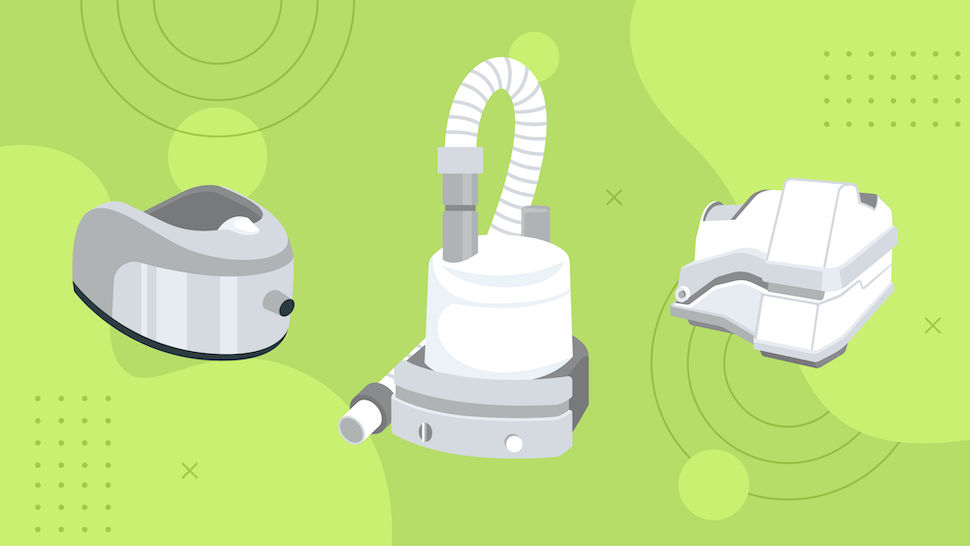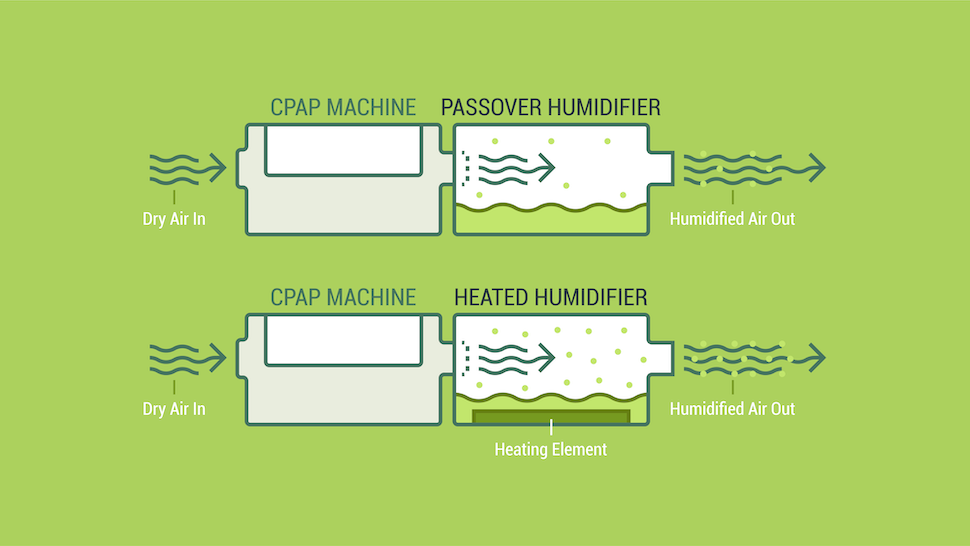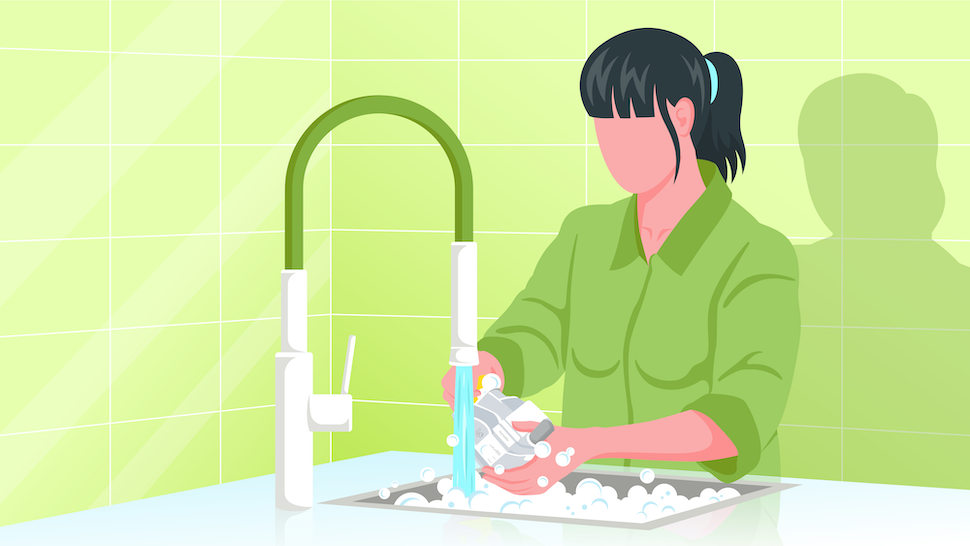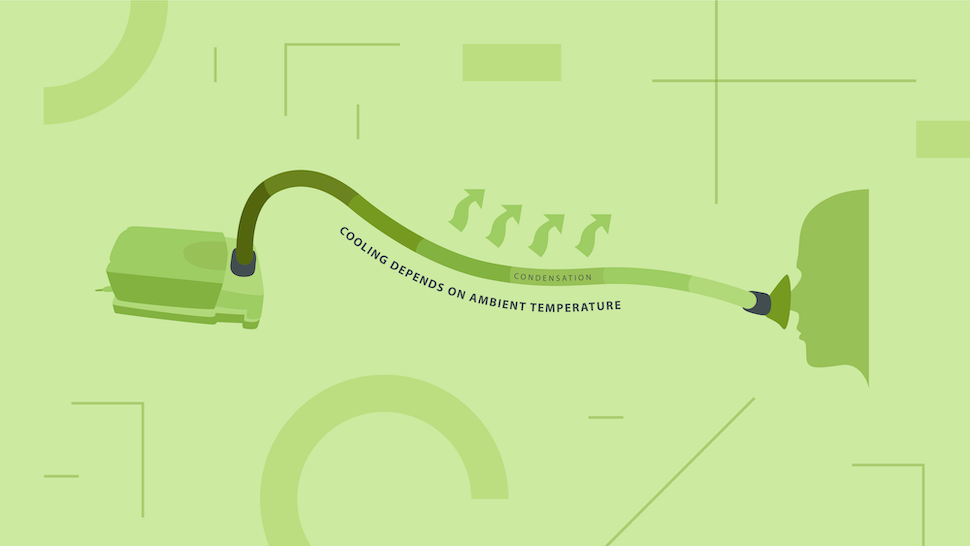CPAP humidifiers are a simple and effective way to increase your comfort. Here’s a quick overview of the essentials!
Nasal and oral discomfort or dryness are common symptoms of CPAP machine usage.
The forced air can quickly dry things out as you sleep, leaving you feeling less than stellar when you wake up.
It wasn’t long ago that addressing this would require expensive additions to your setup or connecting external devices to your existing CPAP machine.

However, most CPAP machines designed for home use today feature humidifiers to help address the issue.
Some travel CPAP machines even offer basic humidification or allow you to use an external humidifier to help improve comfort.
In this guide, we’re going to look at how CPAP humidifiers work, how to keep them running safely and smoothly for most CPAP equipment, and any common pitfalls you might run into using a humidification chamber with your CPAP machine.
CPAP Humidifiers Explained
Humidifiers work by adding moisture to the air pumped through the tube to your mask.
This can help alleviate dry or irritated oral or nasal tissues and allow you to adjust to your PAP therapy more easily.
Common CPAP-related issues which a humidifier can help to address include:
- Dry or irritated nasal passages
- Dry mouth
- Frequent bloody noses
- Congestion
- Sore or scratchy throat
- Sinus irritation
Sometimes, after a period of adjustment, you might find you no longer need the humidifier to be comfortable while wearing your mask.
This can also be true in areas with high ambient humidity.
However, the opposite can also be true. For example, you might find that due to seasonal differences, you don’t need as much humidification during the summer months as you might during colder winter months.
For most, a humidifier will offer a noticeable and immediate difference in irritation and other symptoms.

Most humidifiers fit into one of three humidifier styles:
- Standalone: Connect to your existing CPAP machine but are typically compatible with a range of different devices. Often will require external power and can be less convenient in terms of space savings and overall ease of use.
- Integrated: Designed for your specific model of CPAP machine, these humidifiers are typically external but simpler to connect and use. They’re also typically recommended by manufacturers for optimal humidification and performance and are most likely to take advantage of any specialized connections or features available on your CPAP machine.
- Built-In: Many of today’s most popular CPAP machine models include a humidifier built into the device. You won’t need to worry about additional connections, and built-in humidifiers typically offer some of the most space-efficient designs available. They also can take full advantage of any features built into your machine. However, since you can’t remove the humidifier, it could be less flexible in situations where space is at a premium.

Between those three styles, you’ll also find two different types of humidification:
- Passover: Uses room temperature water to add humidity to the air you breathe as it passes over the reservoir. While it doesn’t directly warm the air or water, heated tubing can help to provide warmth if a heated humidifier is not available.
- Heated: Uses a heating plate or element to heat the water, humidifying the air you breathe and warming the air for added comfort.
Regardless of the style of humidification type, these humidifiers will always need to connect to either your mask tubing or your machine to function.
Maintaining and Operating Your CPAP Machine Humidifier
Studies have shown that a humidifier dramatically increases the comfort of PAP therapy, further increasing the chances of proper CPAP machine usage.
This is particularly true for older users, users who take prescription medication with dry mouth as a side effect, and users who have had oral, nasal, or throat surgeries.
Fortunately, maintaining and operating a humidifier is very easy.
The exact steps will vary depending on both the model of CPAP machine and the model of humidifier you are using.
As such, while these guidelines should apply to most machines, be sure to consult your user manual for any additional considerations or possible differences from our recommendations.
In most cases, operating your humidifier is as simple as adding water to the level indicated on the side of the reservoir and connecting it to your CPAP machine–either directly or using CPAP tubing.
You should always use distilled water where possible.
While tap water or even drinking water is likely safe to use for short periods, it can lead to mineral build-up in your humidifier components or CPAP tubing.
This build-up can be difficult to remove and, over time, will likely lead to reduced performance from your medical equipment.

Each day, you should empty your reservoir and give it a quick wash with warm water and mild soap.
This will prevent any odours or growth in the tank.
You can also periodically disinfect the tank using a 3-to-1 mixture of clean, warm water and white vinegar.
Always air dry your reservoir to avoid lint, dust, or other contaminants in your tank or tubing.
Once dry, return your reservoir to your machine for use the next time you sleep.
Periodic replacement of your reservoir is also recommended, and most manufacturers recommend doing so every six months or so.
However, should you notice damage to your reservoir, reach out to your CPAP supply store or care provider to determine replacement options.
Damaged reservoirs could leak and cause further damage to other property or equipment.
It’s also possible for heating elements to slowly degrade on heated humidifiers.
However, most should last for many years when used with distilled water. So this isn’t often an issue.
If you suspect your heating element is malfunctioning, contact your CPAP supply provider or manufacturer for warranty information and troubleshooting steps.
Never attempt to repair your CPAP machine yourself.
Doing so could not only cause physical harm to yourself but void the warranty on your medical equipment as well!
Common Pitfalls When Using a CPAP Humidifier
Whether you’re new to PAP therapy or a seasoned user, you’ll notice the difference when you start using a humidifier.
Much like other CPAP accessories or settings, even minor adjustments can make a big difference in your overall experience.
If you’re having trouble adjusting to your CPAP humidifier or don’t feel like you’re getting the most out of your humidifier, consider these common pitfalls and tips to avoid them.
Eliminating Rainout

If you find yourself waking up with a wet face or experiencing condensation collecting in your hoses after using a CPAP humidifier, you’re experiencing something known as rainout.
Even if it doesn’t bother you, the additional moisture building up on your skin and in your CPAP mask can cause further skin irritation and compromise the seal on your mask.
Fortunately, fixing it is typically simple.
Heated hoses or insulating hose covers will often work well if you’re experiencing rainout due to the differences in the air temperature in your CPAP tubing and the ambient air around it.
They can also help to provide warmer air through your tubing by eliminating the impact of colder surroundings on the air flowing through the tube.
This is definitely a perk if you live in a colder climate (or simply prefer to breathe warmer air).
Don’t want to use heated tubing or insulated CPAP tube covers?
Check your CPAP machine and humidifier to see if you can reduce the overall humidity or temperature of the humidifier.
Adjustments aren’t always available–or may be locked depending on your model.
So if you can’t find the settings, consult your manual or reach out to your manufacturer or CPAP supply store for additional guidance.
Travelling with a CPAP Humidifier
Unless you have a travel CPAP machine, lugging your CPAP equipment around can be less than ideal–especially if you’re travelling by air or staying in cramped accommodations for an extended period.
Adding components to your CPAP setup isn’t going to make things any easier.
Worse still, you’ll need to ensure you have access to distilled water throughout your travels if you plan to use the humidifier.
So what can you do?

You can simply leave the humidifier behind or disable it in most cases.
If it’s an external or integrated model, just return your CPAP configuration to its original state.
If it’s a built-in humidifier, check your CPAP machine manual to determine how to operate it without the humidifier.
Many models will allow you to do so, but exact steps vary.
When choosing between the discomfort of humidified air and the discomfort of a night without your CPAP machine, there’s a good chance the sleep apnea symptoms are far worse–especially if you plan to be away from home for an extended period.
You can also consider picking up a travel or portable CPAP machine if your budget allows. Like humidifiers, most insurance companies will not cover the cost of a portable CPAP. So either option will likely result in out-of-pocket expenses.
Many offer some form of humidification and take up far less space in your luggage than a traditional CPAP machine.
Finally, if you don’t mind travelling with your humidifier, be sure to bring enough distilled water for the first night or two of your travels.
This will ensure that you have plenty of time to find distilled water at a retailer near your destination once you’ve arrived and eliminate the stress and pressure of scrambling to find supplies in a new or unknown location.
Avoiding Strong Scents or Oils
Most humidification reservoirs or chambers are plastic.
As such, you need to be careful when cleaning them to avoid strongly scented soaps or cleaners since they might leave their scent on the reservoir itself.
While your favourite soaps might smell good in the air around you or on your skin, having them pumped directly into your nose or respiratory tract for hours at a time can be decidedly less pleasant.
The same goes for essential or scented oils.
While you might see people use essential oils to provide aromatherapy benefits or pleasant smells when using a room humidifier, you should never use them in your CPAP humidifier.
These oils can easily cling to the plastic of your tank, making them very hard to remove.
However, the bigger problem is the risk of breathing in oil droplets or aerosolized oils.
This can lead to severe lung irritation and substantial health risks.
When possible, use mild or unscented soaps to clean your reservoir.
Soaking the reservoir with a 3-to-1 mixture of clean water and vinegar can also help to not only disinfect your tank but neutralize any smells (good or bad) harboured in the plastic.
If you need the air you breathe to smell good, stick to scented candles or other environmental options–don’t use your CPAP machine to do so.
Key Takeaways
- CPAP humidifiers significantly increase the comfort of using your CPAP machine.
- Side effects alleviated can include dry or irritated nasal passages, frequent bloody noses, congestion, sore throats, and sinus irritation.
- Humidifiers are available in standalone, integrated, and built-in designs.
- Standalone humidifiers will often work with multiple CPAP machine models. However, built-in humidifiers typically offer the best integration with CPAP machine features and settings.
- Passover humidifiers add moisture to the air using room temperature water. In contrast, heated humidifiers use a heating element or plate to heat the water, adding moisture and increasing the temperature of the air you breathe.
- Using your humidifier is often as simple as adding distilled water to the recommended level in the reservoir and ensuring that the humidifier is connected to your CPAP tubing. External models might need an additional power source.
- Always use distilled water with humidifiers to avoid mineral build-up and extend the life of your humidifier.
- Empty your reservoir daily when possible and clean it using mild soap and warm water.
- Weekly disinfection using a 3-to-1 mix of warm water and white vinegar can help avoid nasty build-up or odours.
- Rainout is caused by condensation within your CPAP tubing due to differences in ambient temperature and your heated or humidified air temperature.
- Heated tubing or insulated tubing wraps can greatly reduce or eliminate rainout occurrence.
- When available, adjusting heat or humidity settings can also help to reduce rainout severity.
- If travelling with a CPAP humidifier is too cumbersome, many machines will operate without their humidifier.
- For standalone or integrated models, simply return your machine to its original configuration and reconnect your humidifier when you return home.
- Travel CPAP machines also sometimes offer compact humidifiers to allow you to maintain comfort without devoting half your bag space to CPAP equipment and accessories.
- To reduce stress and ensure safe operation, be sure to account for distilled water needs for the first night or two of your travels.
- Avoid strongly scented soaps or essential oils to minimize health risks or respiratory irritation and avoid lingering smells on your humidification chamber.
CPAP Supply is Canada’s leading online CPAP supply store in customer satisfaction. If you’re looking to improve the comfort of your PAP therapy or need help sourcing replacement parts for an existing humidifier, our friendly service selection of CPAP humidifier products and accessories from leading manufacturers will help take the hassle out of choosing the best options for your needs. Contact us today or browse our CPAP humidifiers for more information!
References:
- Sleep Foundation: CPAP Humidifiers
- ResMed: Why Use a CPAP Humidifer?
- Verywell Health: Using a Humidifier with CPAP
- The American Sleep Apnea Association (ASAA): The Importance of CPAP Humidification
- The American Sleep Apnea Association (ASAA): What You Should Know About CPAP Humidification
- HealthSqyre: Do I Need a CPAP Humidifier?
